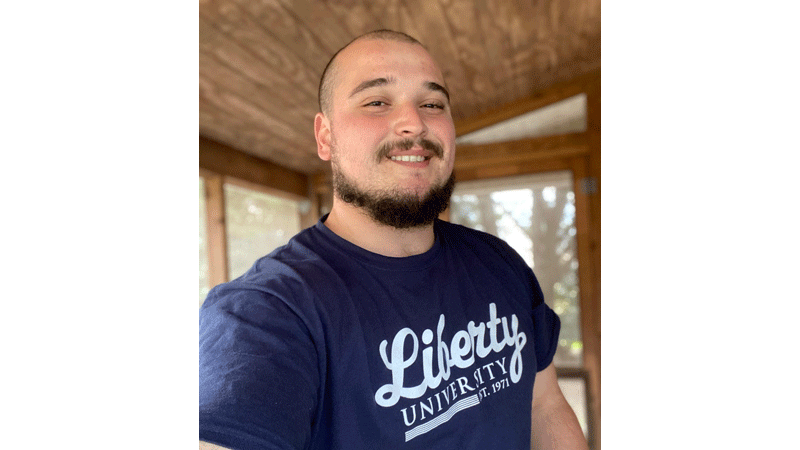1861 an interesting time for region
Published 10:41 am Wednesday, August 17, 2011
By Daniel Balfour
In the summer of 1861, people in Southampton County, black and white, were anticipating the formation of a new country, thus splitting the United States into two countries.
Southampton County and the rest of the South hoped to leave the Union peacefully, and, if not, to win their “independence” in a short war. Most Southampton folks anticipated the glories of the war rather than its horrors. Very few, if any, had participated in the earlier war with Mexico.
Various military units were organized across the South, including Southampton County. There were about 1,000 men in the county eligible for military service, and a cavalry company, artillery battery and several infantry companies were organizing.
In April 1861, Virginia voted against secession, and two weeks later, after the bombardment of Ft. Sumter, voted to secede. This did not include all of Virginia, as in June, Francis Pierpont was elected governor of Virginia for the western part of the state, which in 1864 became West Virginia.
Upon the bombardment of Fort Sumter, county diarist Daniel Cobb wrote: “The ball is open at Charleston, S.C.; the war has begun.”
Most county folks thought the North started the war.
A cavalry company existed as part of the Virginia militia. The Southampton Cavalry Co. was commanded by Capt. Joseph Ezra Gillette, which before 1861 was part of the 4th Virginia State Cavalry.
The Southampton Grays, which organized in Jerusalem on May 3, 1861, first marched to Zuni, where they camped for about a year. They trained in various spots in Isle of Wight and Nansemond counties.
In June 1861, Capt. Richard Clements organized the Rough and Ready Guards. In July, from Courtland, the Guards went to Camp Cook near Smithfield, where they remained until they, along with the Grays, were integrated into the 3rd Virginia Infantry of the Confederate Army.
Later Capt. Nathaniel Francis commanded the Guards. The Thomas sisters made a “beautiful flag” for this company. They probably were General George Thomas’ sisters, who wished to affirm their Southern support since he chose to remain loyal to the Union.
In June 1861 the Southampton Lee Artillery Unit also organized, and eventually was attached to the 41st Virginia Infantry. Capt. George Beaton organized a third infantry company in the Boykins area, which became Company H of the 41st Virginia Infantry.
The unit for which we have more information for 1861 is the Southampton Cavalry. In late spring, the Southampton troop was first at Camp Cook in Isle of Wight, but eventually remained at Camp Ruffin through December 1861.
The cavalry’s primary duty was to picket at points along the James River. This camp was named for Edmund Ruffin, who allegedly fired the first shot on Ft. Sumter.
With the cavalry and infantry companies so close, families visited with their fathers, brothers and husbands who were camped in Isle of Wight and Nansemond counties. None of these units engaged the enemy that summer, but drilled, got properly equipped and watched for Union boats on the James River. Some members of the Southampton cavalry had a servant (slave) to groom horses, cook and launder. During the summer, some men transferred to other units to be with relatives or close friends. All in all, that summer of 1861, the Southampton boys entering Confederate service did not find military life that distasteful. The Southampton Cavalry seemed on a picnic going from Courtland to Smithfield.
Private James F. Bryant wrote: “And there (Dr. Pretlow’s plantation) we were accommodated with a very good breakfast. Those that preferred also had a Julep with ice.
“Leaving there at 6:30 a.m., we continued our march until we reached Tucker Swamp Church at about 10 o’clock, our squad being a little ahead of the Captain & Co., who arrived there about 10:30 a.m. Here we continued our march until we reached the home of the generous and hospitable Hac. Urquhart’s.
“Sr. Esq., who had as many Juleps, with ice as the Southampton Cavalry could take care of.
We remained here about three-quarters of an hour, when we left for Mrs. Urquhart’s, than whom a more generous and noble Lady of our fair southern clime was ne’er born. Here we had everything that our appetites could ask for, and after partaking very freely of all the luxuries prepared here, we again commenced our march for this place, arriving here about 7:45.
“The Richmond Dispatch reported in a column on May 25, 1861: “A company of Southampton Cavalry, numbering about 80 men, well mounted and armed, arrived here last evening, and are quartered at the fairgrounds. While I write, they are on parade, in company with [the] Nansemond Cavalry and the appearance of the two together would frighten a host of Old Abe’s minions.”
All in all, the war looked glamorous to county boys in the summer of ‘61.





